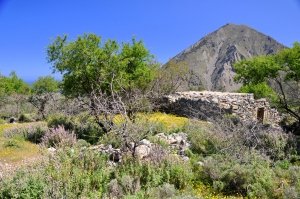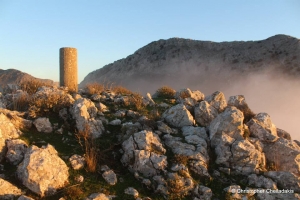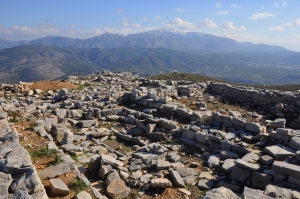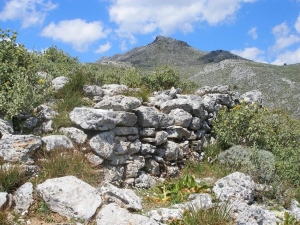The Late Minoan settlement of Vrondas is located in an elevated position, 2km south of Kavoussi. It was inhabited during the setting of the Minoan Civilization by Minoans who moved to the peaks of the Cretan mountains so as to protect themselves from the Dorians who occupied the island.
High above the village of Mirthios at Province Agios Vasilies rises the peak Kyrimianos at an altitude of 805 meters. It is an extremely rough and steep place, without trees except for some ancient cypress trees that have been left there to remind us that the mountain range that covers the valley of Agios Vasilios (Kouroupa) is the geological continuity of the White Mountains.
At the top of the rocky hill of the Prophet Elijah (Profitis Ilias) near Smari, at an altitude of 590m, there are the ruins of a citadel with a strong defensive wall. The place has panoramic views across the fertile planes of Kasteli and Smari. According to the archaeologist Hadjivallianou, the citadel was the actual site of ancient Lyttos mentioned by Homer. The city was inhabited from 1800 BC till 630 BC, before being abandoned by its inhabitants.
Above the ruined village of Kolokasia in the province of Sfakia, on the southeast side of Asfendou gorge, stands the steep rock Kastri. As evidenced by traces of buildings and part of a fortification wall, Kastri probably was a town built during the Dark Period, just after the collapse of Minoan civilization in the 12th century BC.
Above the steep gorge of Adrianos in the province of Mirabello rises the rocky outcrop of Fortezza. This inhospitable, steep and naturally fortified rock was chosen by the deposed Minoans to form a small town during the so-called Dark Period.
- 1
- 2


















































































